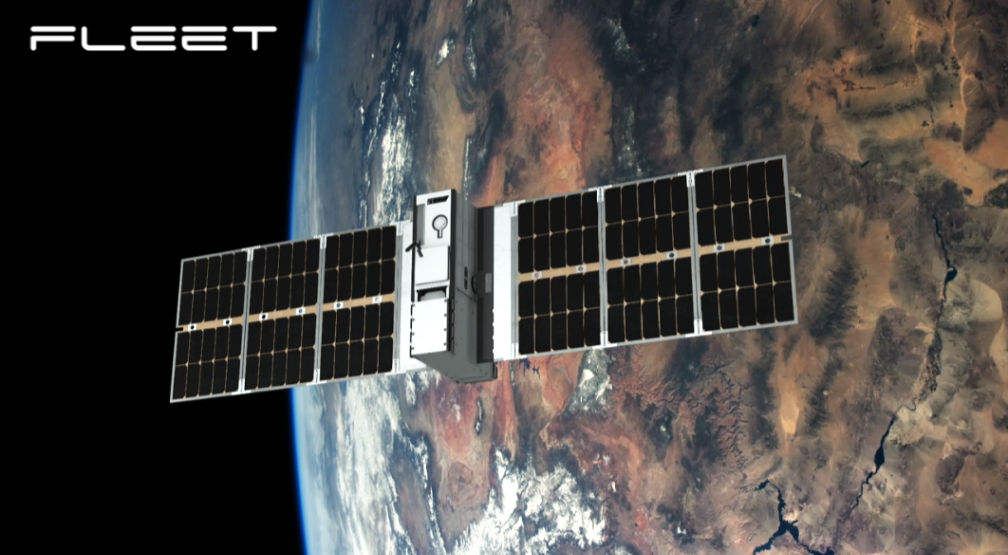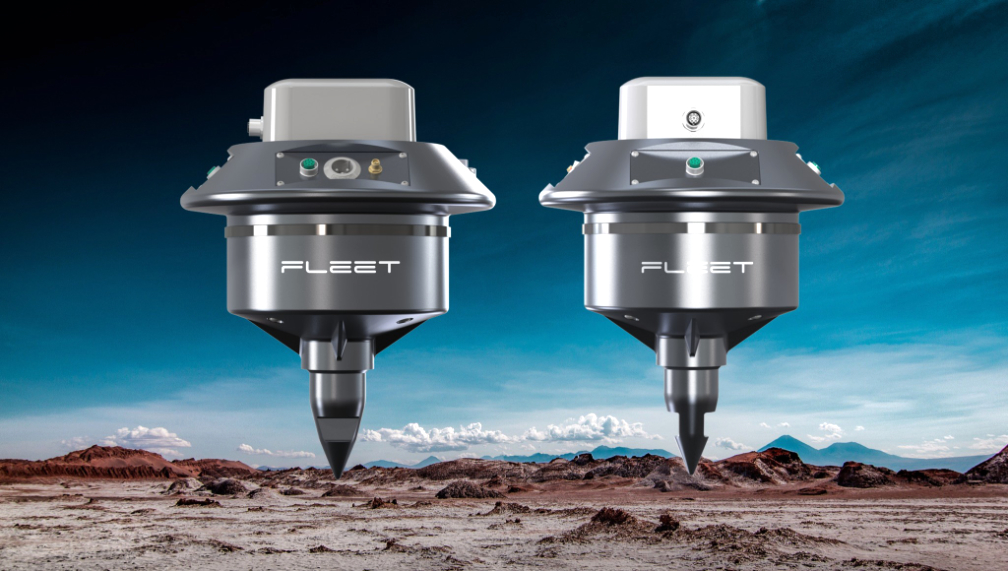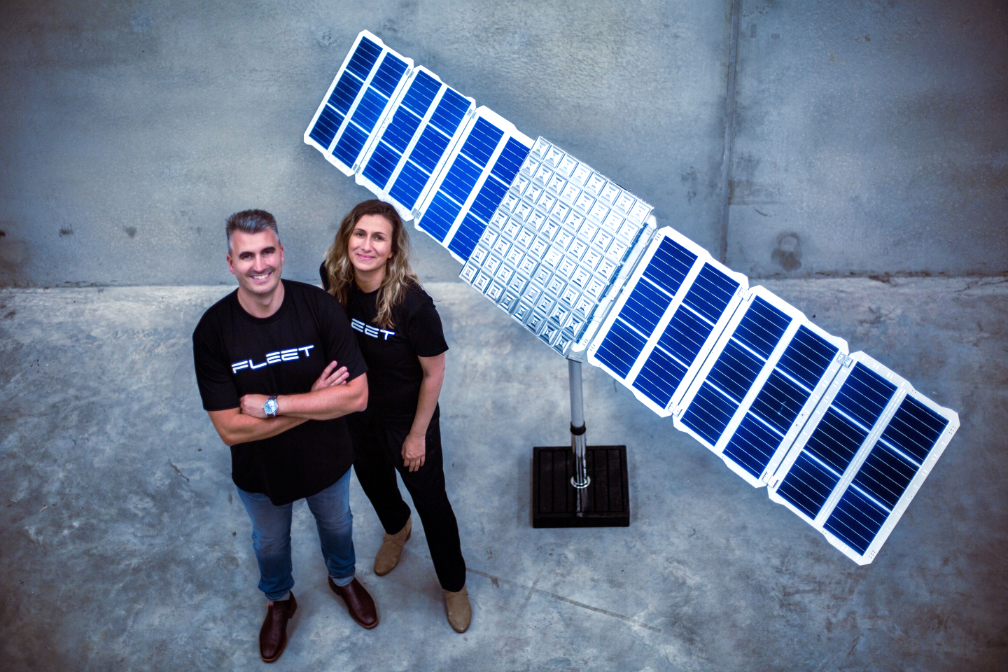
Fleet Space‘s GeoSphere is a first-of-its-kind system that combines wireless Geodes, edge computing and a constellation of LEO smallsats to discover critical resources up to 100 times faster than traditional methods.

GeoSphere also drastically reduces the requirement for environmentally damaging elements of existing surveyance practices, such as the use of explosives, noise machines and drilling. In this sense, it is a passive, non-destructive technique to assess site viability for mineral and material deposits.
Deposits of copper, nickel, cobalt, gold and lithium for example, which are used to create zero emissions car batteries, can now be discovered through a 50 sq/km grid of satellite-enabled Geodes that can be easily installed by small, local teams. These are hand-transportable sensors which dramatically reduces the logistics requirements for remote exploration projects. GeoSphere also allows explorers to adapt their approach quickly without the need to dismantle and move heavy equipment.
Each wireless, battery-operated Geode contains a sophisticated processing unit, satellite transmitter and a seismic sensor. The Geodes use the principles of seismology to map the properties of the Earth’s subsurface from reflected seismic waves by recording ambient noise — a process known as Ambient Noise Tomography (ANT).

Once sufficient ANT data is gathered, Geodes partially process the raw information on site, reducing the data requirement for transmission — a practice known as ‘edge processing’ that significantly increases the speed of connectivity between Internet of Things (IoT) devices and allows more information to be sent while drawing significantly less power.
This streamlined volume of data is securely pushed to Fleet Space’s existing network of low-power smallsats. The smallsat then automatically sends the information to ground stations, dramatically reducing the time required to process data. This, in turn, allows explorers to make informed decisions on areas of interest much faster than traditional methods. There is no longer any need to wait for devices to be collected, shipped and unpacked to collect the data.
The data from each Geode is rapidly processed through a machine learning (ML) algorithm aimed to deliver a full 3D visualization of the subsurface down to 2 km. depth. A clear, rich image of what resources are below ground can be generated in as little as four days — ordinarily, ANT takes 6-12 months to return a conclusive result.
Using a bespoke, Fleet-developed system, these visualizations are accessible to view and export anywhere on Earth in real-time. The speed of this imaging now means that thousands of square kilometers of area can be imaged in a fraction of the time of traditional methods.
Already In Operation
This combination of three radical technologies — ambient seismic noise tomography, low-power satellite connectivity and intelligent cloud processing, are employed to help companies with their exploration for copper, gold, cobalt, nickel, lithium and other critical minerals.
In a landmark 1000km2 survey in Australia’s South Eastern region, the ANT method was used to unobtrusively image regional structures and faulting in order to target a geothermal reservoir.
ANT provides a three dimensional, sub-surface representation of variations in seismic velocity and is particularly useful when imaging depth of cover, structural anomalies, alteration and bedrock topography. ANT adds significant value when incorporated early in the geophysical cycle to up and down rank potential targets. When combined with Fleet’s connectivity and integrated cloud processing, GeoSphere is proving to be a rapid screening tool for the mineral exploration industry.
The company has been developing their GeoSphere Technology for more than two years in tandem with the launch and successfully commercialization of the firm’s first, smallsat network. This has led to the successful oversubscription of a Series B funding round, propelling Fleet to status as a leader in Australia’s rapidly emerging space sector — an industry of key strategic importance to the development of the Australian economy. Indeed, the Australian Space Agency stated aim is to contribute $12 billion (AUS) to the economy by 2030. This is underpinned by significant strategic support at a Federal and State level.
Fleet is one of Australia’s fastest growing technology exports. This has led to the development of the company’s first international HQ in Houston, Texas, a place in direct proximity to NASA, the world’s largest space agency.

